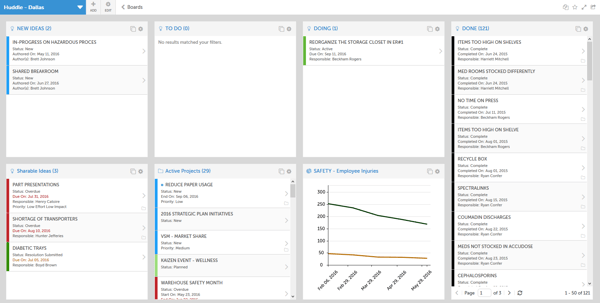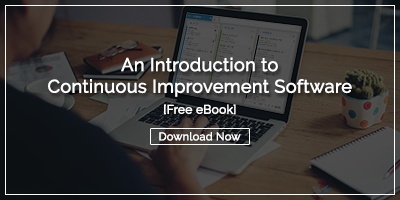 While it started in the manufacturing sector, today, the Lean business methodology has been embraced in almost every industry. One of the reasons it is so popular is that there are a set of tools and techniques designed to help organizations live the principles of Lean.
While it started in the manufacturing sector, today, the Lean business methodology has been embraced in almost every industry. One of the reasons it is so popular is that there are a set of tools and techniques designed to help organizations live the principles of Lean.
Fortunately for modern leaders, software is available to support Lean efforts and speed the path to improvement and waste reduction. The best Lean software solutions have features to enhance multiple Lean techniques in a single platform that becomes the repository for all improvement knowledge and work.
Here are seven popular Lean tools that can be better managed with software.
DMAIC and PDSA
DMAIC (Define, Measure, Analyze, Improve, Control) and PDSA (Plan, Do, Study, Act) are the two cycles of Lean improvement. DMAIC is typically used with a very structured process that results in measurable outputs that need to be tightly controlled. PDSA can be applied to any process that needs to be improved. Lean software makes it possible to document each step of either cycle. It includes alerts and notifications to let team members know when something needs to be done. The Lean software solution also measure the results of each improvement cycle over the short and long-term.
Standard Work
Standard Work is an essential Lean concept. For there to be improvement, there must be a baseline set of best practices for each task that is applied every time until the process is selected for improvement. Lean software supports Standard Work in multiple ways. The process of developing the Standard is tracked as an improvement, ensuring that the right people are involved and engaged. It serves as a repository for the current Standard, so everyone knows exactly how to find it when needed. When the Standard is ready for improvement, the cycle begins again.
Catchball
The Lean technique of Catchball involves tossing ideas back and forth between people to get ideas and feedback until a consensus is reached. While it is tempting to use email for Catchball, it is not ideal. It is easy for messages to get missed, and relevant information can be buried under other unrelated work. A better solution is to use a Lean software platform designed for precisely this type of back and forth collaboration. The entire conversation about a particular process, improvement, or idea is all in one place and accessible at any time.
Daily Huddles
Daily huddle meetings are a common sight in Lean organizations. Everyone gathers around a huddle board to discuss the improvement work of the day and address any obstacles. In-person daily huddles work great if everyone is in the same location, but many modern teams now involve distributed workforces. When you implement software, the physical location of each person no longer matters. Lean software allows for a digital huddle board so people can actively participate from wherever they happen to be. Another huge benefit is that the system captures the history of each improvement project, so organization knowledge is captured for future reference.

Gemba Walks
During a Gemba walk, leaders go to the place where work is done to show respect for the workers and identify opportunities for improvement. Improvements aren’t made during the walk, only after it is complete and thoughtful analysis, often a PDSA cycle, occurs. Lean software forms the repository for each improvement that is considered. After a plan is in place, the workflow for those opportunities that have been selected for implementation occurs within the system. It is also the perfect place to store photos, illustrations, or other documents associated with the walk.
Hoshin Kanri
Hoshin Kanri is a planning and strategy development tool that involves selecting a few breakthrough objectives that can be achieved in 3-5 years. Strategies, tactics, and assignments are drafted to ensure the success of each goal. Lean software helps Hoshin Kanri management by aligning each individual’s objectives with the organization’s strategy in the same tool that is used for daily improvement work, bringing the plan into the regular view of every employee.
Kanban
Kanban is the Lean tool for visualizing workflow to make any interruptions or backlogs in a work process immediately apparent. Displaying the movement of work from one part of the process to the next helps team members act quickly when the value stream is impeded. Lean software lets users create digital Kanban boards so that the current state of any process or project is clear and appropriate action can be taken.
Lean software will not solve every problem, and it is not a replacement for a culture that values the search for perfection. But, by giving your team a solution for Lean improvement work, you increase the effectiveness of every Lean manufacturing tool that you take advantage of. You’ll experience improvement projects that move faster, and you’ll see more of them cross the finish line.
That will delight all stakeholders.

![[WEBINAR] Strategy Deployment Software Demo](https://no-cache.hubspot.com/cta/default/326641/67b72769-975a-48b1-b5d8-4ba0fe1f3b76.png)


Add a Comment